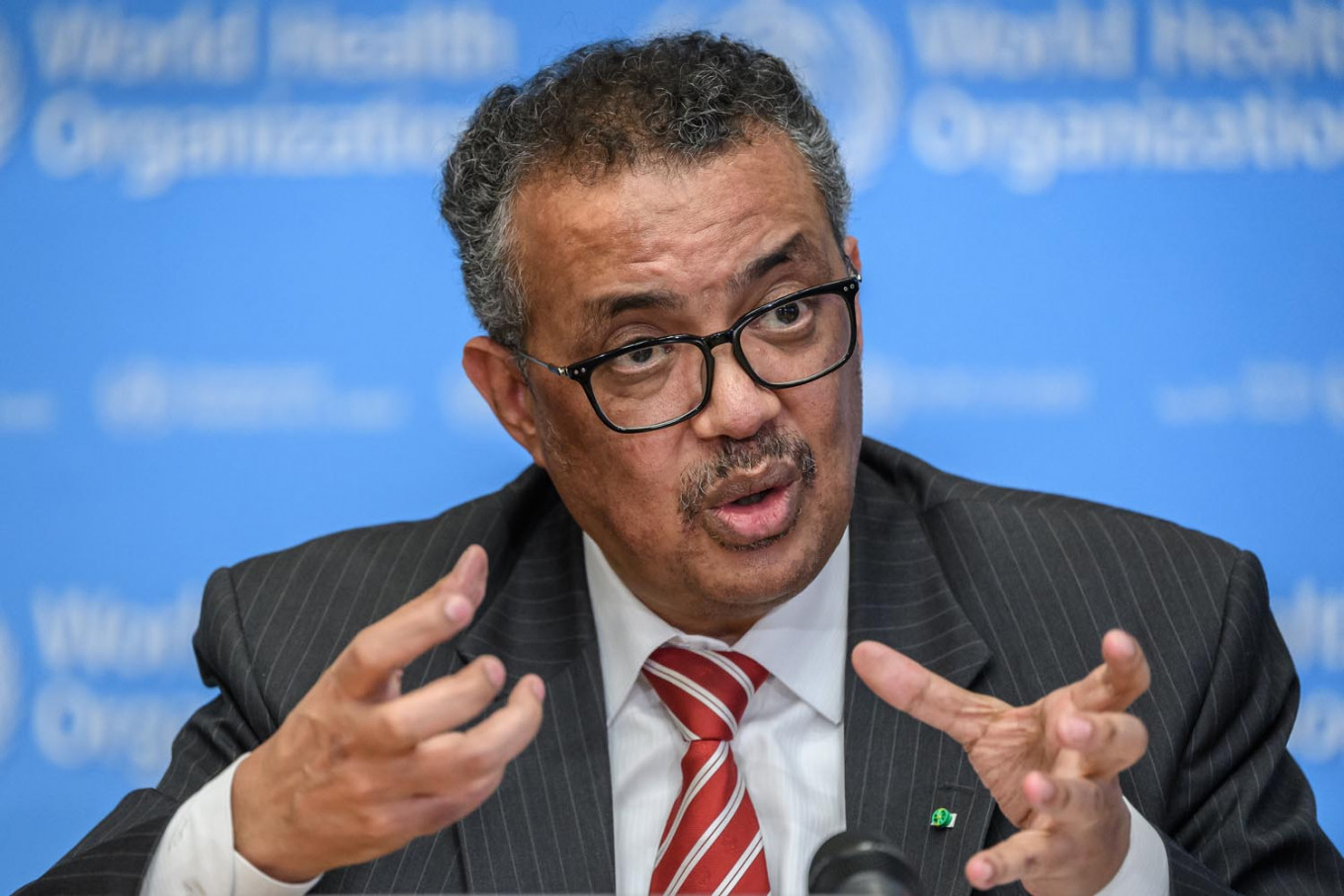WHO says reviewing NYT article on concerns over airborne spread of COVID-19
Change Size
 World Health Organization (WHO) Director-General Tedros Adhanom Ghebreyesus talks during a daily press briefing on COVID-19 virus at the WHO headquaters in Geneva on March 11, 2020. WHO is reviewing a report that suggested its advice on the novel coronavirus needs updating, after some scientists told the New York Times there was evidence the virus could be spread by tiny particles in the air. (AFP/Fabrice Coffrini)
World Health Organization (WHO) Director-General Tedros Adhanom Ghebreyesus talks during a daily press briefing on COVID-19 virus at the WHO headquaters in Geneva on March 11, 2020. WHO is reviewing a report that suggested its advice on the novel coronavirus needs updating, after some scientists told the New York Times there was evidence the virus could be spread by tiny particles in the air. (AFP/Fabrice Coffrini)
T
he World Health Organization (WHO) is reviewing a report that suggested its advice on the novel coronavirus needs updating, after some scientists told the New York Times there was evidence the virus could be spread by tiny particles in the air.
The WHO says the COVID-19 disease spreads primarily through small droplets, which are expelled from the nose and mouth when an infected person breaths them out in coughs, sneezes, speech or laughter and quickly sink to the ground.
In an open letter to the Geneva-based agency, 239 scientists in 32 countries outlined the evidence they say shows that smaller exhaled particles can infect people who inhale them, the newspaper said on Saturday.
Because those smaller particles can linger in the air longer, the scientists - who plan to publish their findings in a scientific journal this week - are urging WHO to update its guidance, the Times said.
"We are aware of the article and are reviewing its contents with our technical experts," WHO spokesman Tarik Jasarevic said in an email reply on Monday to a Reuters request for comment.
The extent to which the coronavirus can be spread by the so-called airborne or aerosol route - as opposed to by larger droplets in coughs and sneezes - remains disputed.
Any change in the WHO's assessment of risk of transmission could affect its current advice on keeping 1-metre physical distancing. Governments, which also rely on the agency for guidance policy, may also have to adjust public health measures aimed at curbing the spread of the virus.
"Especially in the last couple of months, we have been stating several times that we consider airborne transmission as possible but certainly not supported by solid or even clear evidence," Benedetta Allegranzi, the WHO's technical lead for infection prevention and control, was quoted as saying in the New York Times.
WHO guidance to health workers, dated June 29, says that SARS-CoV-2, the virus that causes COVID-19, is primarily transmitted between people through respiratory droplets and on surfaces.
But airborne transmission via smaller particles is possible in some circumstances, such as when performing intubation and aerosol generating procedures, it says.
Medical workers performing such procedures should wear heavy duty N95 respiratory masks and other protective equipment in an adequately ventilated room, the WHO says.
Officials at South Korea's Centers for Disease Control said on Monday they were continuing to discuss various issues about COVID-19, including the possible airborne transmission. They said more investigations and evidence were needed.









